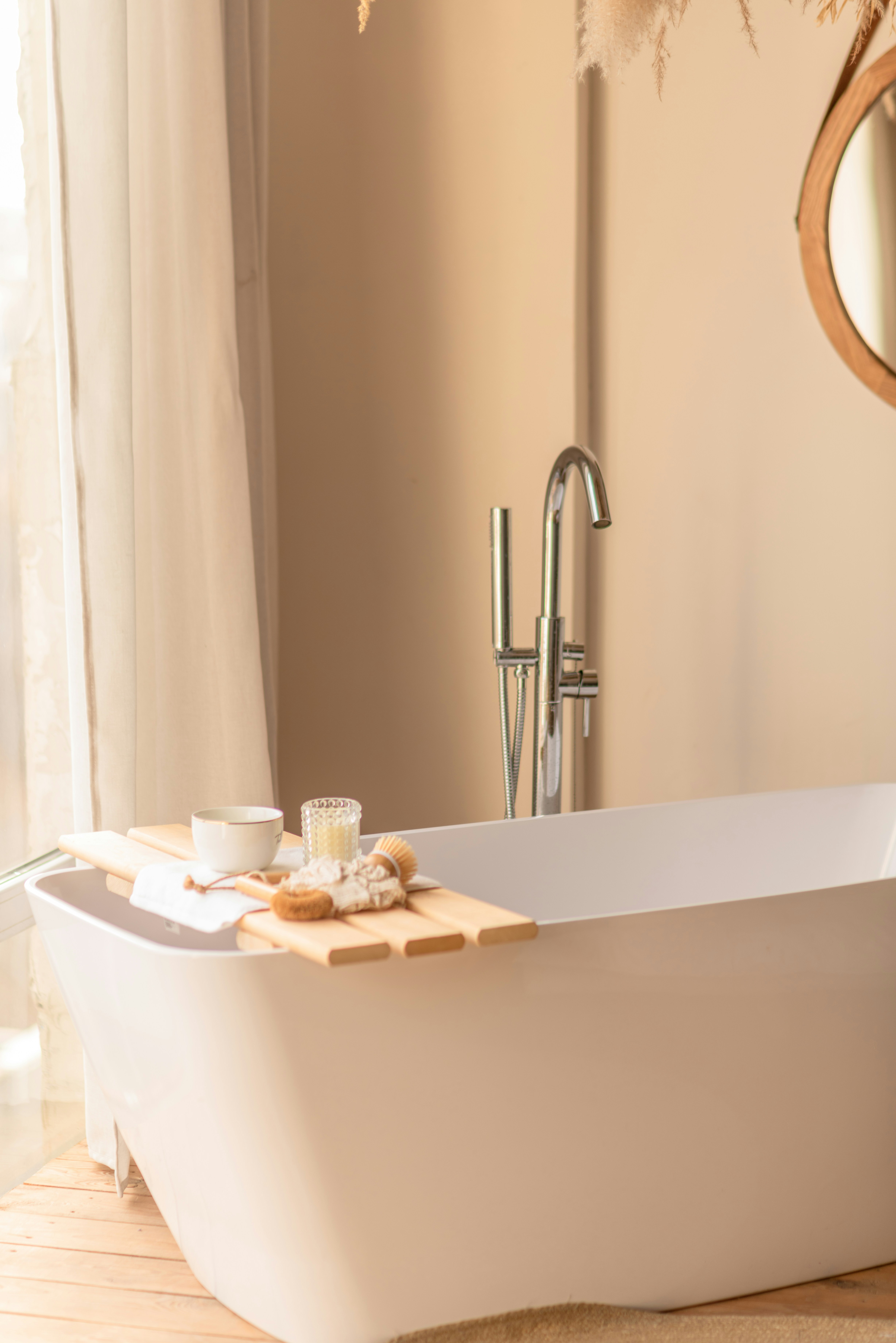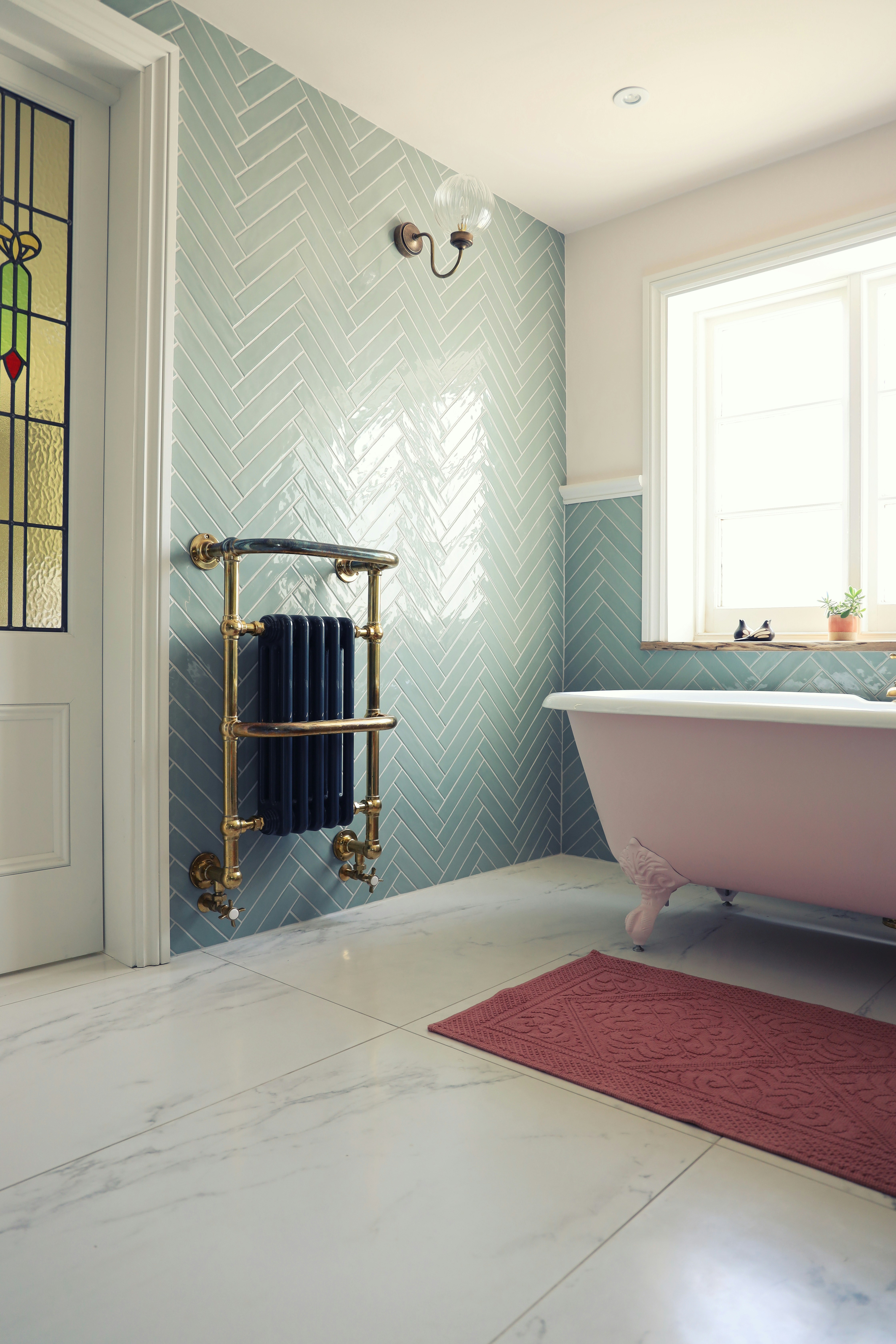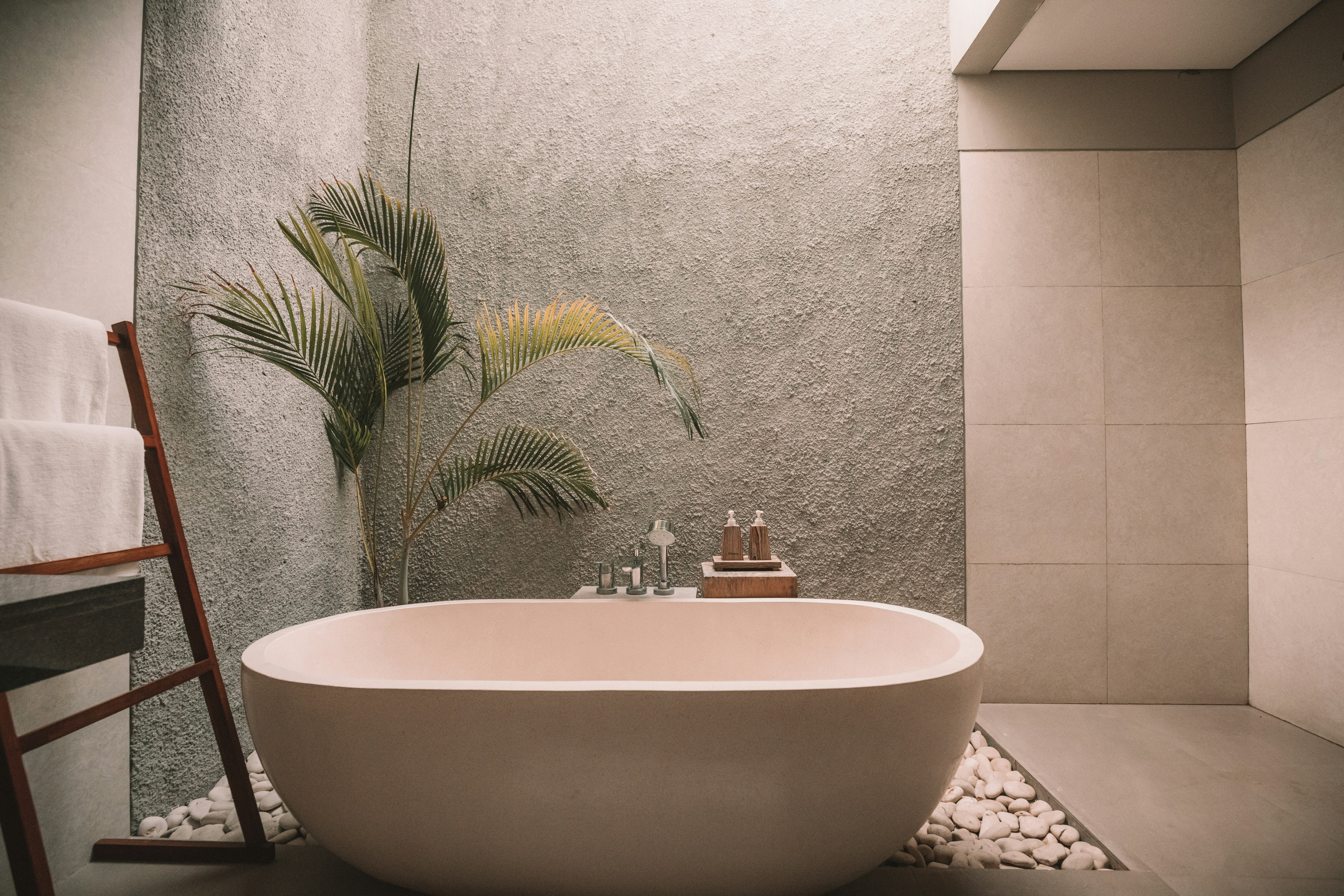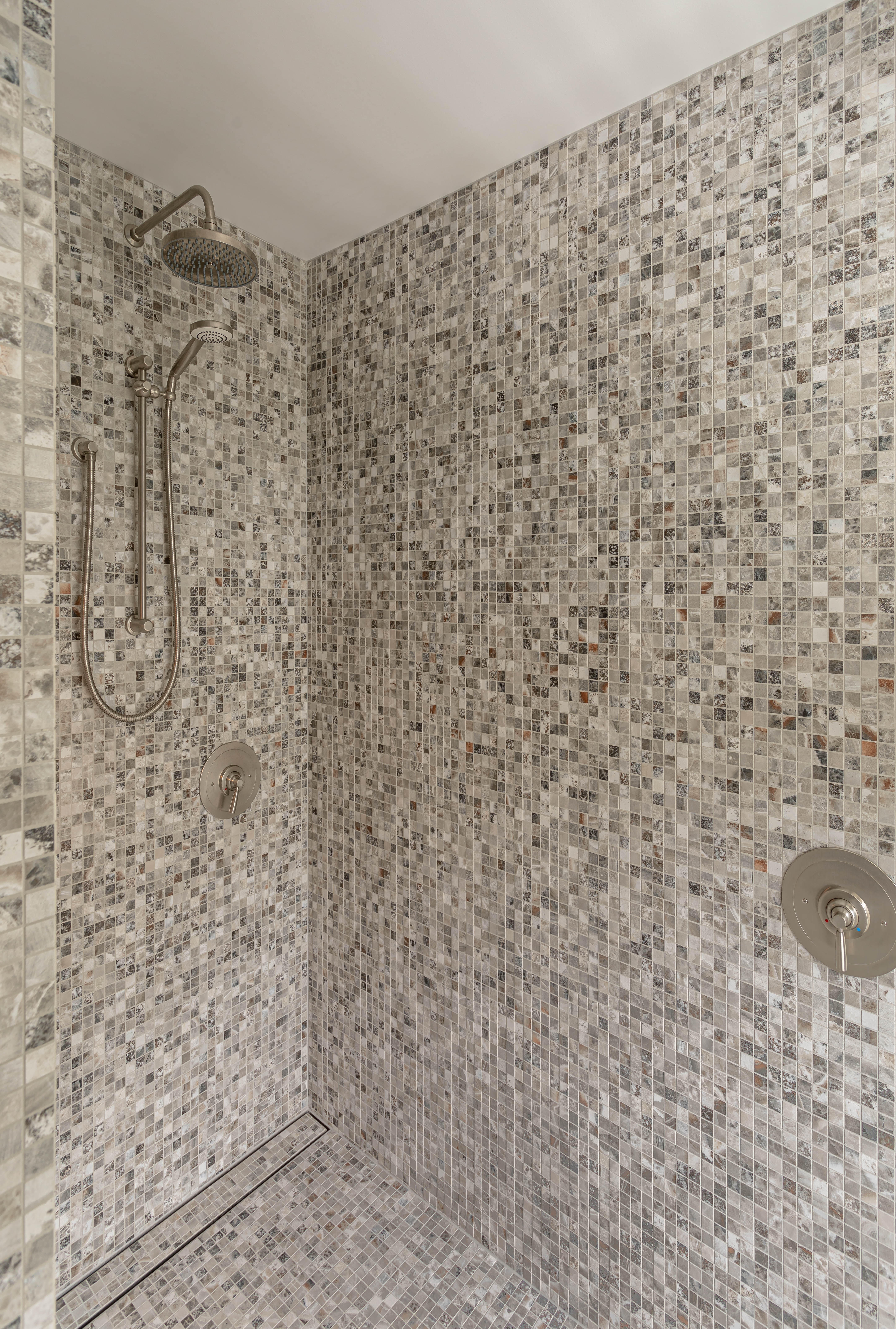Feature article
Add value to your bathroom with these flooring options
We break down the most to least expensive options for a new bathroom floor.
Last updated: 11 March 2024
Along with a new kitchen, an updated bathroom will undoubtedly provide you with a return on your investment — especially if you’re thinking of selling. In general, updating your bathroom should begin from the ground up. Here are some ideas for creating an impact underfoot.
Cover image: Timber flooring can create a stunning natural feel in both contemporary and traditional bathroom settings, and can be suitable for certain wet areas as long as it is properly waterproofed.
Timber bathroom flooring
Contrary to popular belief, timber flooring can be used in your bathroom. While wooden floors and wet areas don’t mix as a general rule, as long as your timber flooring is properly waterproofed, there’s no reason why you can’t have the warmth of natural timber in your bathroom. Don’t be afraid to go all out and incorporate a slatted teak or bamboo shower base. Team timber with other natural materials, such as stone or marble for a high-end, luxury feel. One thing to note, timber flooring can be the most expensive option with prices starting at around $100 per square metre.
This traditional bathroom uses large-format floor tiles and wall tiles in a herringbone pattern, creating a layered aesthetic.
Wood-look and ceramic tile options
If it’s a timber look you’re after but without the associated maintenance, then ceramic tiles are an ideal option. Available in a range of sizes and finishes — not just timber-look — ceramic tiles can be used to add pizazz or classic elegance to your bathroom design. Incredibly hard wearing, ceramic tiles can also be used on the walls of your bathroom to create a cohesive look and are also particularly suited to being teamed with underfloor heating systems. While offering myriad options, design-wise, ceramic tiles come in as the next expensive option, starting at around $70 per square metre.
The options are endless when it comes to bathroom design, and there’s always room to get creative. This design concept imagines a relaxing, spa-like retreat using stones to surround a freestanding bath.
Vinyl flooring
For a more affordable option, consider vinyl flooring. Vinyl flooring comes in two formats, vinyl sheets or rolls and vinyl plank flooring. Which format is best for you will come down to the size of your bathroom and the look you’re hoping to achieve. Vinyl flooring is available in a wide array of patterns, can be used with underfloor heating and can be recycled at the end of its life. Vinyl flooring starts at around $50 per square metre.
In this Auckland bathroom in a home designed by Jessop Architects, mosaic tiles across the floor and walls create a beautiful visual continuity. Image: John Williams
Laminate and linoleum flooring
Other options to consider when budget is a factor include laminate flooring and linoleum. While laminate flooring has not really been an option in wet areas previously, modern laminates have upgraded joint seals that can resist water and provide against water damage. Laminate flooring starts at around $40 per square metre. Linoleum is one of the oldest manufactured flooring products and is often seen as an environmentally friendly alternative to vinyl as it is derived from renewable, natural biodegradable materials. It’s also the cheapest of the flooring options, starting at around $30 per square metre.
Resurfacing
Another budget option to consider, especially if your existing bathroom flooring is in good condition, is resurfacing. Resurfacing is not just limited to floors and walls; most bathroom fixtures can also be resurfaced to look new again. While the cost will depend on the size of the bathroom, the extent of any repairs and whether you’re including fixtures, resurfacing can be up to 70 per cent cheaper than a full remodel — making it a popular choice for budget-conscious homeowners.
Author
Other articles you might like




